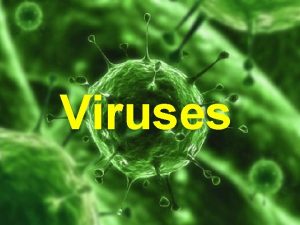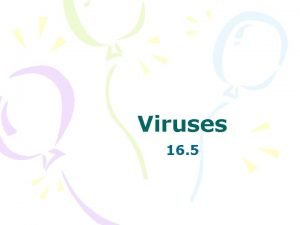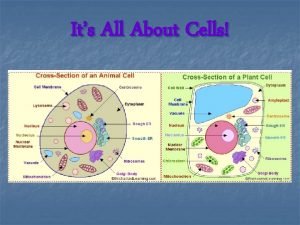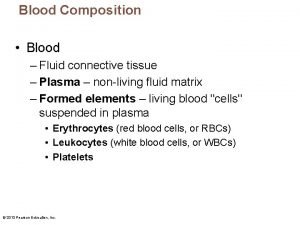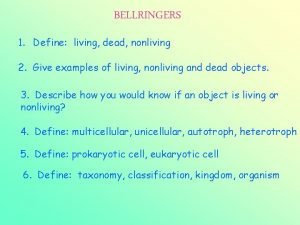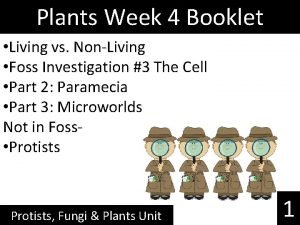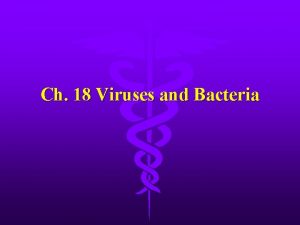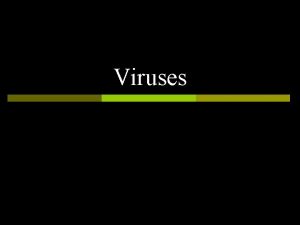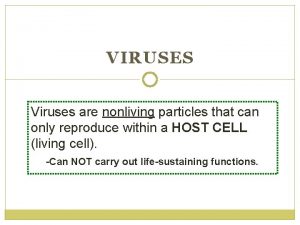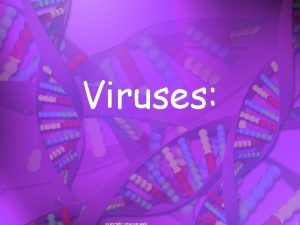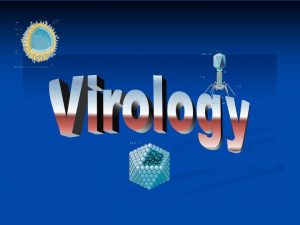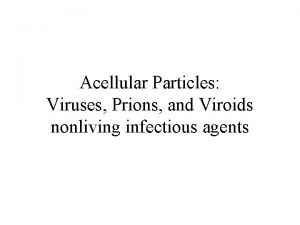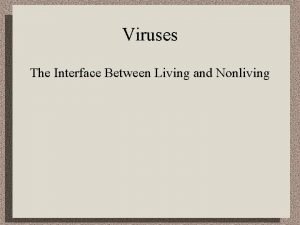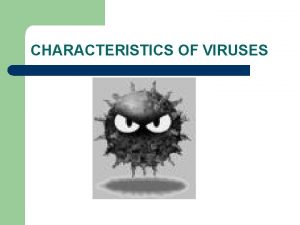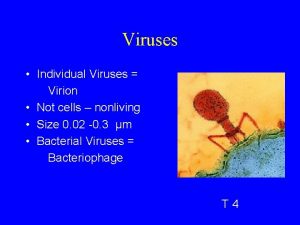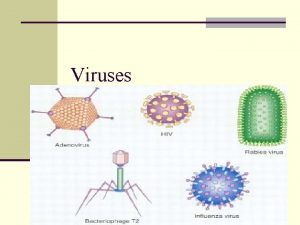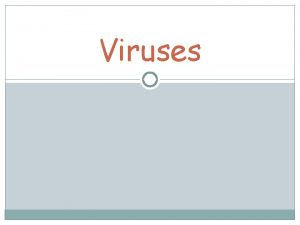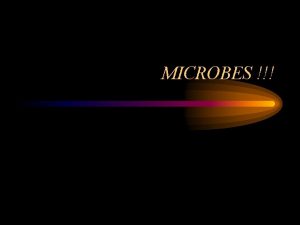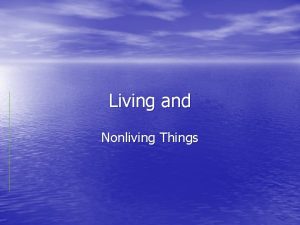What are viruses Viruses are nonliving particles composed




















- Slides: 20

What are viruses? • Viruses are non-living particles composed of a nucleic acid (DNA or RNA) and a protein coat. • Viruses need a host cell to reproduce—this is why they are not considered alive! – Host cell: the cell that a virus infects • Viruses invade healthy cells and use the enzymes and organelles of the host cell to make more viruses, usually killing the host cell in the process.

Viruses (continued) • Viral diseases are among the most widespread illnesses in humans. These illnesses range from mild fevers to some forms of cancer and include several other severe and fatal diseases. • Transmission of these illnesses varies; some are transmitted by human contact, while others are transmitted through water or an insect bite. • Vaccines and some anti-viral drugs are used to control and prevent the spread of viral diseases. • Examples: cold, flu, HIV, polio, chickenpox, and many more.

Viruses



Measles

Cold Sores

What are fungi? • Fungi are eukaryotic, nonphotosynthetic organisms (they don’t go through photosynthesis, they have to eat food), and most are multicellular. • Most fungi reproduce both sexually and asexually (producing spores). This provides an adaptive advantage. When the environment is favorable, rapid asexual reproduction ensures an increased spread of the species. During environmental stress, sexual reproduction ensures genetic variation, increasing the likelihood that offspring will be better suited to the new environmental conditions.

Fungi (cont. ) • Fungi can sometimes attack the tissues of living plants and animals and cause disease. Fungal disease is a major concern for humans because fungi attack not only us but also our food sources, making fungi competitors with humans for nutrients. • Mold spores can cause mild to serious allergies in some people. Billions of mold spores can become airborne and may then be inhaled, triggering an allergic reaction. • Examples: black mold, fungal meningitis


Zombie Ants




What are protists? • Protists are mostly single-celled, microscopic organisms mostly found in water. – Include multicellular organisms, but don’t belong to the other kingdoms. – Protists play many roles in their environment. • Some are producers that also produce oxygen which is beneficial to many other organisms. • Some protists act as parasites and can cause disease in many organisms, including humans. • Algae is a protist that uses sunlight as an energy source.

Protists (cont. ) • Protozoa are animal-like protists that eat other organisms or decaying parts of other organisms. – Many forms, all single-celled – Cannot use sunlight as an energy source – Must move around to obtain energy – Ex. Paramecium: Have cilia, which are short, wavy strands of “hair” – Some protozoa have flagella, which are whip-like “tails” used to swim. Ex: Euglena • Many protists live as parasites, some of which cause disease. • Malaria is one of the world’s most significant diseases, and is caused by a protist. A mosquito carries the parasite from human to human through blood.

What are parasites? • A parasite is an organism that feeds on another individual, known as the host. They either live on or in their host’s body. • Parasites have evolved to efficiently feed off of the host’s body, so they are usually very specialized. Tapeworms are so specialized for a parasitic lifestyle that they do not even have a digestive system. They live in the small intestine of their host and absorb nutrients directly through their skin. • Infectious disease may also be caused by animal parasites, which may take up residence in the intestines, bloodstream, or tissues.



 Why are viruses considered nonliving?
Why are viruses considered nonliving? Why are viruses considered nonliving
Why are viruses considered nonliving Mikael ferm
Mikael ferm Youtube . com / watch v = roxnvcaezjs
Youtube . com / watch v = roxnvcaezjs Unlike lytic viruses, lysogenic viruses do not
Unlike lytic viruses, lysogenic viruses do not What is the smallest part of a plant
What is the smallest part of a plant Live n living
Live n living Egg living or nonliving
Egg living or nonliving Nonliving solid with crystal like properties
Nonliving solid with crystal like properties Is a candle living or nonliving
Is a candle living or nonliving Nonliving cells
Nonliving cells Tree is a living or nonliving
Tree is a living or nonliving Living things
Living things Heme group
Heme group Ecosystems examples
Ecosystems examples Is sulfolobus living or nonliving
Is sulfolobus living or nonliving Yeast living or nonliving
Yeast living or nonliving Tropical rainforest living and nonliving things
Tropical rainforest living and nonliving things Protist coloring sheet answer key
Protist coloring sheet answer key Living and nonliving things venn diagram
Living and nonliving things venn diagram Is a starfish living or nonliving
Is a starfish living or nonliving
